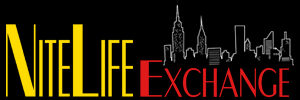
By Marilyn Lester***What is Downtown anyway? In New York City artistic circles, Downtown performers offer offbeat, avant garde, novel and often edgy acts, played mostly in the East Village, but sometimes in the West Village as well. So, in matching such a crew of performers with the mainstream, foundational music of Tin Pan Alley (the Uptown source of the American Songbook) the result in Tin Pan Alley Goin’ Downtown was amazing and marvelous.

Conceived by the Tin Pan Alley American Popular Music Project’s (TPAAPMP) Board member, Jerry Felix, and introduced by George Calderaro, TPAAPMP Founder and Board president, the event was held at Pangea (a club that’s downtown and up in equal measure). Tin Pan Alley Goin’ Downtown was co-produced by Felix and TPAAPMP with TWEED TheaterWorks and its Co-Founder and Artistic Director Kevin Malony, Music for the concert was supplied by the Tin Pall Alley Cats: music director and bassist Jesse Breheney (also a TPAAPMP Board member) and pianist Steve Einerson, both of whom provided strong, robust support for the performers over a range of vocal styles.
Hosting Tin Pan Alley Goin’ Downtown was the cabaret and concert star, Natalie Douglas, who dazzled with her rendition of Cole Porter’s 1930 “Love for Sale.” As Douglas informed, the song, delivered by a streetwalker character, was introduced by Kathryn Crawford in the Broadway musical The New Yorkers. Audience backlash was so strong, the setting was changed to Harlem’s Cotton Club and the character became Black, with the tune now sung by Elisabeth Welsh.

A hallmark of downtown performance is offbeat comedy/satire/wit in narrative and song, often in the delivery of all of the above. Penny Arcade’s “Hard Hearted Hannah (the Vamp of Savannah)” from 1924 (Milton Ager, Jack Yellen, Bob Bigelow, Charles Bates) covered all that ground with cheek and sauciness. In the mode of great vocal comediennes, Anna Russell, Darlene Edwards (Jo Stafford) and Beatrice Lilly, Zora Rasmussen (with Bette Sussman at the piano) sang “He’s Me Pal” (1905, Vincent Bryan, Gus Edwards). Rachele Garniez, expertly accompanying herself on accordion, delivered a sly heart-wrenching rendition of the sentimental tear-jerker, “A Bird in a Gilded Cage” (1900 Arthur Lamb, Harry Von Tlzer), while Carol Lipnik got into the mood and into character with an a Capella start to “Meet Me Tonight in Dreamland” (1909, Leo Friedman, Beth Slater Whitson).
Two legends of cabaret/small room venues rocked the room with their unique and never-ceasing-to-amaze stage presence and performances. Story-teller par excellence, Edgar Oliver (he’s a star of The Moth) announced that he can’t sing (not one of his many skills, true) and then delivered a sly reading of the lyric to “My Sweetheart’s the Man in the Moon” (1892, James Thornton). “The Most Beloved Man in Cabaret” (just ask anyone), Sidney Myer, a story-teller in words and music, told a touching and hilarious story about Ethel Merman, connecting the tale to Irving Berlin’s still-fresh “Alexander’s Ragtime Band” (1911).

Also adding plenty of zest to the evening were Aaron Morishita (“Lazy Moon,” 1905, Bob Cole, J. Rosamond Johnson), Melissa Escudero (“Cuddle Up A Little Closer, Lovey Mine,” 1908, Karl Hoschna, Otto Harbach), Tommy Lee McKean with guitar and political skew (“Crazy Words, Crazy Tune,” 1927, Milton Ager, Jack Yellen), and David Greenspan (“Row, Row, Row,” 1912, James Vincent Monaco), a tune loaded with double-entendres.
Concluding a rousing fun and informative evening, Douglas led the full house in a sing-along of the unofficial anthem of MLB, “Take Me Out to the Ball Game” (1908, Jack Norworth, Albert Von Tilzer). Clearly the marriage of Uptown and Downtown is one with chops—may it last forever.
To find our more about TPAAPMP and its many fabulous activities, and why songs written over 100 years ago are still alive and kicking worldwide, click here. Click here to learn more about TWEED.
All photos by André Archimbaud








